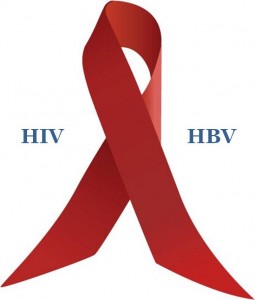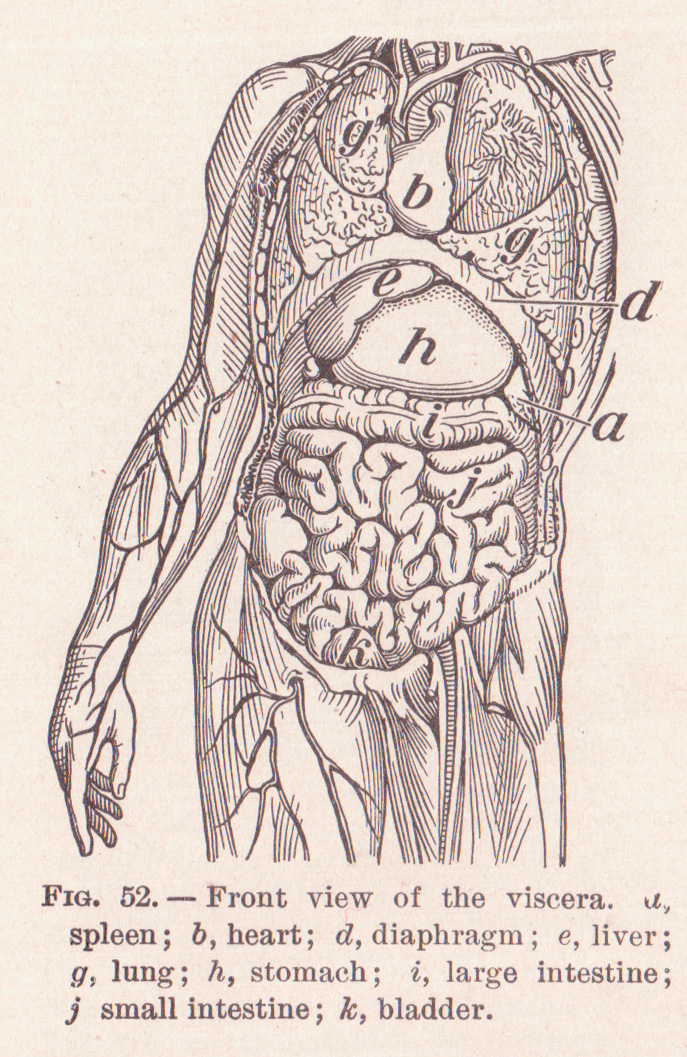Co-infección de hepatitis B y HIV

Las mayores expectativas de vida de los pacientes infectados con virus de inmnodeficiencia adquirida (HIV), evidentes desde que se comenzaron a utilizar terapias altamente efectivas contra esta infección, han dejado al descubierto la importancia de las infecciones virales por hepatitis B y C, al convertirse en la actualidad en una de las causas más importantes de morbi-mortalidad en estos pacientes.
La infección por el virus de la hepatitis B (HBV) es prevalente en el mundo entero, siendo especialmente frecuente en individuos portadores del HIV, debido a que comparten mecanismos de transmisión. La infección por HBV afecta aproximadamente al 10% de los enfermos portadores de HIV. En la medida que los tratamientos altamente activos contra el HIV permiten que los pacientes vivan más tiempo, se ha hecho evidente que una causa muy importante de mortalidad es la cirrosis hepática a consecuencia de la infección por HBV y el virus de la hepatitis C (HCV).
La historia natural de la hepatitis crónica B es modificada por la infección por HIV. El aclaramiento espontáneo de la infección se reduce y aumentan los niveles de replicación viral, incrementándose la velocidad de progresión de la fibrosis hepática, con el consecuente aumento de las descompensaciones hepáticas y de la mortalidad en estos pacientes. Los factores que se asocian a mal pronóstico de la infección por HBV en pacientes con HIV son:
- Mayor edad.
- Bajos recuentos de CD4.
- Persistencia de HBeAg.
- Niveles elevados de HBV DNA en plasma.
Enfrentamiento inicial
Todos los pacientes infectados con HIV deben ser examinados con HBsAg y anti-HBc, además de recabarse información sobre vacunación para hepatitis B. A los pacientes con HBsAg detectable, además de completar el estudio se les debe solicitar anticuerpos anti-hepatitis Delta (anti-HDV). La presencia de anti-HBc aislado debe hacer sospechar la presencia de infección oculta por HBV (ver más adelante).
La evaluación de los pacientes con HBsAg positivo debe incluir la historia de síntomas y antecedentes de descompensaciones hepáticas, la determinación de pruebas hepáticas, HBeAg y anti-HBe. La medición de la carga viral, mediante detección cuantitativa de DNA viral, se considera parte de la evaluación habitual de estos pacientes en la actualidad.
El estudio se complementa con una ecografía abdominal y dependiendo de los hallazgos, con una biopsia hepática para determinar el grado de inflamación y la etapa de fibrosis. El uso de exámenes no invasivos para evaluar fibrosis como el Fibroscan® puede ser una alternativa útil dentro de la evaluación.
Hepatitis B oculta
La hepatitis B oculta se define como la presencia de DNA de HBV detectable en sangre, usualmente a niveles bajos, en pacientes con HBsAg negativo y anti-HBc positivo. Esta situación es más frecuente en los pacientes co-infectados con HIV que en pacientes no co-infectados. Su significado en términos de pronóstico e historia natural aún es incierto, por lo que su estudio se recomienda sólo en determinadas situaciones clínicas, como por ejemplo presencia de cirrosis sin otras etiologías evidentes en presencia de anti-HBc positivo.
Objetivos del tratamiento
El objetivo ideal y más ambicioso del tratamiento es lograr la erradicación viral definitiva y disminuir el riesgo de progresión de la inflamación y fibrosis hepática. Estos objetivos son difícilmente alcanzables en la mayoría de los pacientes, por lo que un objetivo más realista es mantener la replicación viral controlada en un nivel que disminuya la inflamación hepática y reduzca el riesgo de progresión del daño hepático.
Indicaciones de tratamiento
Pueden distinguirse diferentes escenarios:
Hepatitis B aguda
El tratamiento de la hepatitis B en su etapa aguda no está indicado.
Pacientes sin necesidad de tratamiento antiretroviral
En el escenario de pacientes con infección por HIV controlada, con buenos recuentos de CD4 y sin necesidad de tratamiento antiretroviral, las indicaciones de tratamiento son relativamente similares a la de pacientes no co-infectados. En general, el tratamiento se inicia cuando la evaluación demuestra que la enfermedad hepática está activa y es progresiva. Esto se evalúa con los síntomas, la evolución de los valores de aminotransferasas y en forma mucho más directa, con la información que aporta la biopsia hepática. Se recomienda considerar el tratamiento si la biopsia muestra fibrosis moderada o avanzada (METAVIR igual o mayor de 2), asociada a inflamación moderada o intensa. La medición de la carga viral se considera para la decisión de iniciar tratamiento. Valores mayores de 20.000 UI/mL se consideran indicadores de inicio de tratamiento. Este umbral baja a 2.000 UI/mL en pacientes HBeAg negativo.
En pacientes que pueden tolerarlo, el peginterferón es la droga de elección, ya que tiene una duración definida de tratamiento y cuando se obtiene una respuesta (seroconversión de HBeAg), la respuesta tiende a ser más mantenida. En cuanto a antivirales orales, se deben elegir medicamentos sin acción antiviral contra el HIV (p.ej. lamivudina) para evitar el desarrollo mutaciones resistentes. El adefovir en dosis de 10 mg/d es la droga que más frecuentemente se emplea en este escenario, a pesar de que incluso a esta dosis pudiera tener algún efecto anti-HIV. Se ha demostrado que el entecavir tiene actividad contra HIV, por lo que no se recomienda en esta situación. La tendencia actual en esta circunstancia es iniciar un tratamiento antiretroviral (en forma adelantada) con acción dual contra el virus B.
Pacientes con necesidad de tratamiento antiretroviral
Los pacientes que están en tratamiento antiretroviral representan la situación más compleja debido a que frecuentemente tienen resistencia a algunos antivirales, pueden presentar interacciones medicamentosas y porque pueden presentar consecuencias de la reconstitución inmune (ver más adelante). En general, la recomendación en pacientes que requieren iniciar HAART es elegir una combinación que incluya drogas con máxima actividad contra ambos virus. El uso de tenofovir parece lo más adecuado como parte de esta combinación. La combinación de dos drogas con acción dual contra HBV y HIV parece lo ideal en este contexto, lo que se logra con el uso de tenofovir asociado a emtricitabina (comercializado como Truvada®).
La situación más frecuente en la práctica clínica es la de pacientes co-infectados que han sido tratados con lamivudina como parte de su tratamiento antiretroviral. La gran mayoría de estos enfermos han desarrollado mutaciones en el sitio activo de la polimerasa (mutación en la región YMDD), que le confieren resistencia al efecto no solo de lamivudina, sino también de entecavir y emtricitabina. En estos pacientes, se recomienda la modificación de su esquema antiretroviral, sustituyendo un inhibidor de la transcriptasa reversa no nucleósido (NRTI) por tenofovir (idealmente asociado a emtricitabina). Otras alternativas incluyen la adición de adefovir en dosis de 10 mg/d o el uso de peginterferón.
Cirrosis
Los pacientes co-infectados que están en etapa de cirrosis hepática siempre tienen indicación de tratamiento de la infección por HBV. El interferón se considera contraindicado en este escenario. El tratamiento debe considerar la posibilidad de desarrollo de reactivaciones debido a la reconstitución inmune, particularmente en pacientes con recuentos de CD4 menores de 200 al momento de iniciar HAART. Debido a esto, el régimen antiretroviral debe incluir siempre agentes con actividad anti-HBV.
Reconstitución inmune
La reconstitución inmune producida por el HAART (terapia anti-retroviral altamente activa) produce beneficios al aumentar la posibilidad de seroconversión de HBeAg, pero al mismo tiempo representa un riesgo importante de considerar, ya que puede manifestarse como una exacerbación de la actividad inflamatoria hepática. Esto se debe a que la patogenia del daño hepático por HBV es inmunomediado. Es importante considerar este mecanismo en pacientes que presentan una reactivación de la actividad inflamatoria hepática luego de comenzar o cambiar el tratamiento anti-retroviral, y no confundir este efecto con hepatotoxicidad por drogas.
Prevención
La transmisión de la hepatitis B presenta mayor riesgo de contagio por vía sexual que el HIV. El hecho de que el paciente esté en tratamiento, incluso con cargas virales bajas no autoriza para dejar de utilizar las medidas de protección necesarias para evitar su propagación. Se aplica la misma recomendación de examinar y vacunar contra la hepatitis B a los contactos cercanos (parejas sexuales, personas que viven bajo el mismo techo). Los pacientes co-infectados HBV-HIV deben ser examinados para buscar la presencia de anticuerpos contra HCV. Además se debe buscar la presencia de inmunidad contra virus de hepatitis A mediante la detección de anticuerpos totales, y vacunar si es necesario.
Trasplante hepático
El trasplante hepático, contraindicado en pacientes con infección por HIV unos pocos años atrás, ha comenzado a convertirse en una alternativa real de tratamiento para aquellos pacientes coinfectados que tienen cirrosis descompensada e infección por HIV bien controlada con tratamiento.

The improved life expectancy in patients infected with the acquired immunodeficiency (HIV) virus, evident since the introduction of highly effective treatments against this infection, has exposed the significance of viral infections by hepatitis B and C becoming one of the most important cause of morbidity and mortality in these patients.
Infection with the hepatitis B virus (HBV) is prevalent throughout the entire world, being especially common in individuals who are carriers of HIV, due to the fact that they share transmission mechanisms. HBV infection affects approximately 10% of patients who are carriers of HIV. Insofar as the highly active anti-HIV treatments allow patients to liver longer, it is evident that a very important cause of death is liver cirrhosis due to infection with HBV and the hepatitis C virus (HCV).
The natural evolution of chronic hepatitis B is altered by infection with HIV. There is reduced spontaneous clearing up of the infection and levels of viral replication rise, increasing the speed of progression of hepatic fibrosis, with the consequent rise in hepatic decompensation and the death of these patients. Factors associated with a poor prognosis for HBV infection in patients with HIV are:
- Older age.
- Low CD4 counts.
- Persistence of HBeAg.
- Elevated levels of HBV DNA in plasma.
Initial approach
All patients infected with HIV must be examined for HBsAg and anti-HBc, as well as obtaining information about vaccination for hepatitis B. To patients with detectable HBsAg, anti-hepatitis Delta (anti-HDV) antibodies must be investigated to complete the evaluation. The presence of isolated anti-HBc must give rise to the suspicion of occult HBV infection being present (see later).
Evaluation of patients with positive HBsAg should include the history of symptoms and hepatic decompensations, obtaining liver function tests, HBeAg and anti-HBe. Measurement of the viral load, by means of quantitative viral DNA detection is part of the normal investigations of these patients.
The studies are complemented by an abdominal ultrasound and, depending on the findings, a liver biopsy to determine the degree of inflammation and the stage of fibrosis. The use of non-invasive investigations such as Fibroscan to evaluate fibrosis may be a useful alternative option within the investigation.
Occult hepatitis B
Occult hepatitis B is defined as the presence of HBV DNA detectable in blood, usually at low levels, in patients with negative HBsAg and positive anti-HBc. This condition is more common in patients coinfected with HIV than in non coinfected patients. Its significance in terms of prognosis and natural progression is still uncertain, therefore its study is recommended only in specific clinical situations, like for example, the presence of cirrhosis without other evident etiology in the presence of positive anti-HBc.
Objectives of treatment
The ideal and most ambitious aim of treatment is to completely eradicate the the virus and diminish the risk of the inflammation and liver fibrosis progressing. These aims are difficult to achieve in the majority of patients, thus a more realistic objective is to control the viral replication to a level which decreases the liver inflammation and the risk of worsening of hepatic damage.
Indications for treatment
There are different scenarios:
Acute hepatitis B
Treatment of hepatitis B in the acute phase is not indicated.
Patients with no need for antiretroviral treatment
In patients with controlled HIV infection, with good CD4 counts and without the need for antiretroviral treatment, the indications for treatment are relatively similar to that of patients without coinfection. Generally treatment is started when the evaluation shows that the liver disease is active and progressive. This is evaluated with the symptoms, the progression of the aminotransferase values and more directly, with information provided by liver biopsy. It is recommended to consider treatment if the biopsy shows moderate or advanced fibrosis (METAVIR equal or greater than 2), associated with moderate or intense inflammation. Viral load measurement is considered when deciding to start treatment. Values higher than 20,000 Ul/mL are considered indicators for starting treatment. This threshold goes down to 2,000 UI/mL in negative HBeAg patients.
In patients who can tolerate it, peginterferon is the drug of choice, given that it has a specific treatment duration, and when a response is obtained (HBeAg seroconversion), the response tends to be more maintained. In terms of oral antivirals, medication should be chosen which does not have antiviral action against HIV (for example lamivudine) in order to avoid development of resistant mutations. Adefovir in a dose of 10 mg/d is most often used in this situation, in spite of the fact that even at this dosage it can have some anti-HIV effect. It has been demonstrated that entecavir has anti-HIV activity, thus it is not recommended in this situation. The current tendency in these circumstances is to start antiretroviral treatment (earlier) with dual action against the B virus.
Patients who need antiretroviral treatment
Patients who are on antiretroviral treatment represent the most complex scenario due to the fact that they frequently have resistance to some antivirals, they can present drug interactions and because they may have consequences of immune reconstitution (see later). In general, the recommendation for patients who need initial HAART is to choose a combination which includes the most active drugs against both viruses. The use of tenofovir appears to the most appropriate for part of this combination. The combination of two drugs with dual action against HBV and HIV appears the most ideal in this context, which is achieved with the use of tenofovir associated with emtricitabine (sold as Truvada ®).
The most common situation in clinical practice is that of coinfected patients who have been treated with lamivudine as part of their antiretroviral treatment. The vast majority of these patients have developed mutations in the active site of the polymerase (mutation in the YMDD region), which gives resistence to the effect not only of lamivudine, but also to entecavir and emtricitabine. In these patients, a modification to their antriretroviral regimen is recommended, substituting a non nucleoside reverse transcriptase inhibitor (NRTI) for tenofovir (ideally associated with emtricitabine). Other alternatives include the addition of adefovir in a dose of 10mg/d or using peginterferon.
Cirrhosis
There are always indications for treatment of HBV infection in coinfected patients who are in the hepatic cirrhosis stage. Interferon is considered contraindicated in this scenario. The treatment must consider the possibility of flare ups due to immune reconstitution, particularly in patients with CD4 counts lower than 200 at the time of starting HAART. Due to this, the antiretroviral regime should always use agents which are anti-HBV active.
Immune reconstitution
Immune reconstitution caused by HAART (highly active antirretroviral therapy) is beneficial in terms of increasing the possibility of seroconversion of HBeAg, but at the same time it represents an important risk, given that it can manifest as an exacerbation of the inflammatory hepatic activity. This is due to the fact that the pathogenesis of the liver damage due to HBV is immunomediated. It is important to consider this mechanism in patients who present a reactivation of the inflammatory hepatic activity after starting or changing antiretroviral treatment, and not confuse this effect with drug-related hepatotoxicity.
Prevention
Transmission of hepatitis B presents a bigger risk of infection through sexual transmission than HIV. The fact that the patient is undergoing treatment, even with low viral loads does not enable them to stop using the protective measures necessary to avoid the spread. The same recommendation is made for examining and vaccinating the close contacts (sexual partners, people who live under the same roof) against hepatitis B. The HBV-HIV coinfected patients must be investigated for the presence of anti-HCV antibodies. They should also be checked for anti-hepatitis A immunity by means of the detection of total antibodies, and vaccinated if necessary.
Liver transplant
Liver transplant, contraindicated a few years ago in patients infected with HIV, has begun to become a real option for treatment for those coinfected patients who have decompensated cirrhosis and HIV infection well controlled with treatment.


